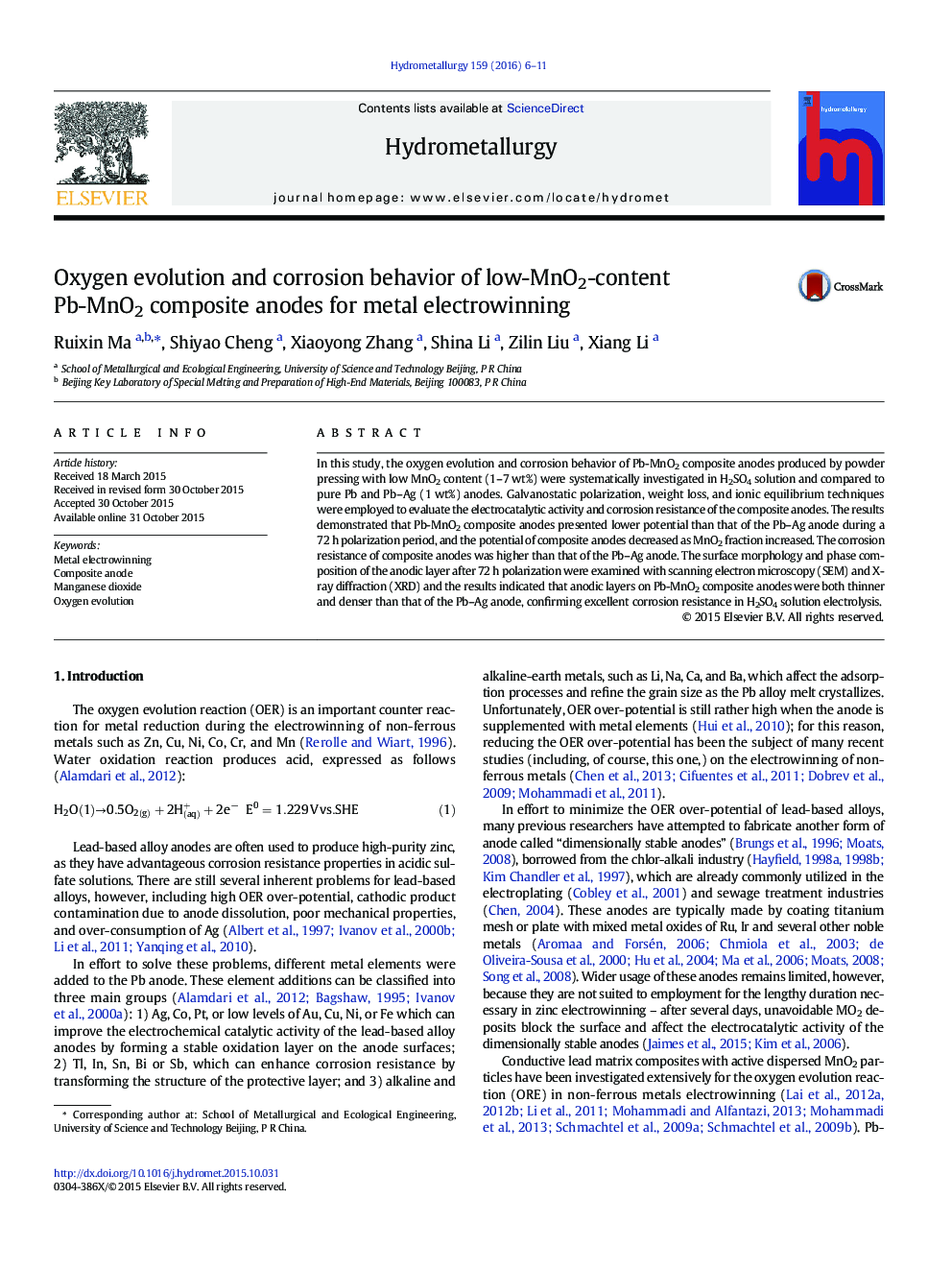| Article ID | Journal | Published Year | Pages | File Type |
|---|---|---|---|---|
| 211896 | Hydrometallurgy | 2016 | 6 Pages |
•2 wt% MnO2 fraction is enough to raise electrocatalytic activity and corrosion resistance above those of Pb-Ag (1 wt%) anode.•The improving effect of electrocatalytic activity decreased as MnO2 content increased beyond 5 wt%.•5 wt% MnO2 is the optimum fraction for producing high-quality and high-performing Pb-MnO2 composite anodes.
In this study, the oxygen evolution and corrosion behavior of Pb-MnO2 composite anodes produced by powder pressing with low MnO2 content (1–7 wt%) were systematically investigated in H2SO4 solution and compared to pure Pb and Pb–Ag (1 wt%) anodes. Galvanostatic polarization, weight loss, and ionic equilibrium techniques were employed to evaluate the electrocatalytic activity and corrosion resistance of the composite anodes. The results demonstrated that Pb-MnO2 composite anodes presented lower potential than that of the Pb–Ag anode during a 72 h polarization period, and the potential of composite anodes decreased as MnO2 fraction increased. The corrosion resistance of composite anodes was higher than that of the Pb–Ag anode. The surface morphology and phase composition of the anodic layer after 72 h polarization were examined with scanning electron microscopy (SEM) and X-ray diffraction (XRD) and the results indicated that anodic layers on Pb-MnO2 composite anodes were both thinner and denser than that of the Pb–Ag anode, confirming excellent corrosion resistance in H2SO4 solution electrolysis.
